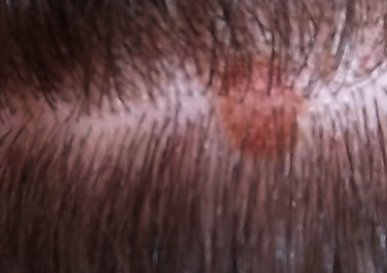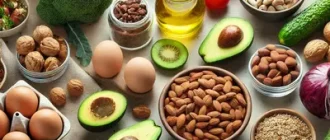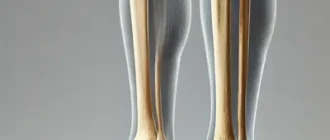Often pimples can form in the hair growth area of the head. There is a concentration of purulent contents inside, a bacterial infection. It is necessary to find out the main reason for the condition. Perhaps it lies in the accumulation of dirt, excessive sebum production, hormonal imbalance. Pimples can cause discomfort, itch a lot, bring pain. Therefore, it is recommended to use timely therapies to prevent complications, reoccurrence of pimples.
Symptoms
The development of pimples on the head occurs according to the following mechanism:
- Severe itching, discomfort feeling a, which is formed even before the appearance of pimples;
- The formation of an inflammatory process with a red border, but of small size;
- Painfulness when pressing;
- Gradual filling of the cavity with pus;
- Self-opening of the pustule on the 5th or 6th day.
Once the pus has disappeared into the self, it is required to disinfect the lesion site. Hydrogen peroxide, Chlorhexidine, and other antiseptics can be used for this purpose.
Pimples may start only on the head. But gradually they move to the rest of the body. For example, the neck, upper back, temples and, face. To prevent this, it is recommended to promptly identify the cause of the condition, begin treatment prescribed by a dermatologist.
If the purulent content of the pimple has penetrated to the deep layers of the epidermis, after opening and healing, connective tissue scars are formed.
Causes of the formation of pimples on the scalp
Physiological changes can form in the body, pathological processes that lead to the formation of pimples. All of them are listed in the table.
| The source of the cause of painful pimples on the scalp under the hair | Description |
|---|---|
| Use of low-quality cosmetics, hygiene products | Often, poor-quality shampoo leads to a lot of rashes all over the body. Pimples are formed, which gradually begin to enlarge. Dermatologists advise to choose a cosmetic product without dyes, preservatives, sulfates, parabens and other harmful substances. In addition, it leads to intoxication, dry skin |
| Improper diet | It is important that the body receives large amounts of vitamins, trace elements, and minerals. If they are concentrated in small amounts or completely absent, electrolyte imbalance and hypovitaminosis occur. This leads to deterioration of hair, nails, and skin quality. Pimples form on the epidermis |
| Stress | If a person is exposed to nervous tension, stress, depression, neurosis for a long time, it has a negative effect on the body. A large number of hormones are released, and fatigue is formed. Increased sweating, activation of sebaceous glands activity is characteristic of the patient. Pores become clogged, pustules form |
| Taking medications | Some medicines have negative reactions for the human body. They cause side effects. For example, hormones, antibiotics, anabolics, barbiturates. During the course of treatment, a purulent mass is formed, which gradually increases in size, spreads over the upper body, including the head |
| Bad habits | Alcohol consumption, prolonged smoking have a negative effect not only on the respiratory tract, but also on the epidermis. Most patients with bad habits have profuse rashes containing pus |
| Low-quality clothes | If the patient wears underwear, clothing, hats with high synthetic content, it has a negative effect on the skin. It begins to sweat heavily, and sebum is produced. It accumulates in the pores, begins to multiply pathogenic microflora. Therefore, it is recommended to use only clothing with a natural composition |
| Overcooling | If a person is not dressed according to the weather during a cold period, hypothermia can develop. This is especially true for patients who do not wear headgear. This negatively affects the epidermis, it becomes excessively cold, dries out, peels, and develops pimples |
Women are characterized by frequent changes in hormone levels. That’s why they have more rashes on their bodies, including on the head and face.
Pathological causes
There are biological causes that can cause the formation of excessively large pustules, which require treatment from the inside:
- Over-secretion of sebum, clogging the pores, which causes inflammation;
- Polycystic ovarian disease, which causes drastic hormonal changes;
- adrenal abnormalities;
- immune dysfunction with a sharp increase in the number of viruses and bacteria in the body;
- chronic infectious process.
Most often, the sebaceous glands are hampered in their function. This leads to excessive production of sebum, which spreads to the supports, clogging them. A large number of pathogenic microflora multiply in this area, which leads to an active inflammatory process. Therefore, the pimples become larger and much more painful. Often, sebum accumulates in the hair growth area of the head. As soon as the pimple bursts, the purulent contents come out, and the pimple begins to heal. But a scar forms in its place.
Women often experience hormonal restructuring, not only with diseases, but also with physiological changes:
- The onset of menstruation;
- adolescence;
- childbirth;
- menopause.
In a woman’s body, there are not only changes in the levels of progesterone, estrogen and testosterone. All this leads to sudden changes in the hormonal background, which causes an increase in the number of pimples. A similar mechanism develops due to a disorder of the adrenal glands.
Pathogenic microflora can multiply on the head area. It is constantly there, but it is activated under the influence of negative factors. For example, the use of poor-quality shampoo. The microbe multiplies, clogging the hair follicle, leading to festering.
If the pimples continue to spread even after buying a good shampoo, it is better to consult a dermatologist.
Classification
There are 2 main varieties of pimples on the head:
- Comedones. These are blackheads that clog pores. They are highly inflamed, forming a painful syndrome. Comedones are difficult to see under the hair, so they keep spreading.
- Inflamed acne. These, too, are pimples prone to inflammation. But they are white in the center, redness is observed only at the edges.
It is important not to confuse purulent formation with fatty lesions, which are formed due to changes in metabolism and other processes.
Therapy options
When pimples appear, go for a consultation with a dermatologist. He establishes a diagnosis using the following methods:
- initial examination;
- bacteriological culture;
- General blood and urine tests.
If systemic diseases are detected, additional consultation with narrow specialists is required. For example, a neurologist, an allergist, an endocrinologist.
After determining the root cause, the patient is given instructions for treatment:
- Application of hygiene rules, the use of only quality cosmetics, including scalp and hair care;
- Compliance with a special diet that normalizes metabolism, improves intestinal function, saturates the body with useful substances;
- local or oral administration of antibiotics to eliminate pathogenic microflora;
- antifungal medications, if the inner contents of acne are filled with fungal microflora;
- antihistamines to reduce swelling, inflammation;
- Hormones that normalize the endocrine background.
To improve the condition of the skin, hair and nails, taking multivitamin preparations is recommended.
It is important to treat the condition of the body not only from the inside, but also from the outside. Therefore, the following types of local remedies are used:
- Ichthammol ointment – has antiseptic, anti-inflammatory, drying effect, effectively eliminates any type of pimples;
- Salicylic acid, other tinctures with antiseptic, anti-inflammatory effect.
Treatment methods
Pimples appear due to the formation of a surface or internal pathological process. Depending on the identification of the underlying cause, different types of drugs are recommended, which can be used in combination.
- Antibiotics. Local remedies with an antibacterial component are used to destroy pathogenic microflora on the surface and inside the pimple.
- Ichthammol ointment. Eliminates pus contents, dries up, reduces inflammation on the skin.
- Clay soap. It has antiseptic properties, destroys bacteria and fungi. Often used as an additive to shampoo.
- Oral antibiotics. Are required in severe cases where there is a system of infection in the person’s body, so there is an additional sign in the form of acne. Ceftriaxone, Amoxicillin, Sumamed are recommended. But additionally use probiotics to prevent an imbalance of the intestinal microflora.
- Ultraviolet treatment. Usually used in cosmetic offices. Under the action of the rays, all pathogenic microflora on the skin and mucous membranes are killed.
In the presence of rashes or pusts on the skin requires immediate treatment. This is not only a cosmetic defect, but also the risk of various internal diseases. Therefore, it is better to make a preliminary diagnosis, only then proceed to treatment.
Pimples on the head, the back of the head, in the hair in men and women: treatment with folk methods
As you can see, there are many ways to combat pimples on the head. Some of the most accessible are folk methods.
Folk recipes for the treatment of pimples on the head:
Cosmetic henna. You need to buy in the nearest pharmacy several bags of colorless henna. It is mixed with very hot water. It is not necessary to use boiling water, water at 175 F (80 C) is enough. It is necessary that in the process of mixing you get a porridge, similar to sour cream. Let the mixture stand for a few hours, then add the chicken yolk. Apply the mixture, rubbing it into hair roots, leave it for about half an hour. After that, rinse thoroughly with plenty of water. It is allowed to use a mild shampoo without sodium lauryl sulfate. After henna, it is not necessary to use a balm or mask.
Calendula tincture is an effective remedy that can be found in the pharmacy. It is sold in an alcoholic solution. To prepare a therapeutic agent, you need to mix about 1.1 oz (30 ml) of tincture with a glass of water. Then, a cotton disk is dipped into the resulting remedy and wiped over the scalp. It is not necessary to wash this mixture off the hair. The procedure is carried out two times a week. Features antimicrobial properties.
Tar soap. Sold in any pharmacy or supermarket. The best part is that its cost is affordable. Use this soap to wash your hair about two times a week. After using the soap, you can use a balm that is applied to the ends. Thus, tar soap has antiseptic and antibacterial properties that will help get rid of acne.
Honey and cinnamon. This healing mask also regulates the sebaceous glands. To prepare the substance, you need to mix 1.1 oz (30 ml) of honey and a teaspoon of cinnamon powder. It is necessary to rub the resulting remedy into the roots of the hair. Leave the mixture on your hair for about 25 minutes. Rinse with a lot of water. You can carry out the procedure directly before washing your hair.
Aloe juice is also a great option for treating acne. To obtain the healing medicine, you need to cut the leaves of aloe, and place them in the refrigerator for a couple of days. After that, the skin is removed, and using a spoon, the jelly-like substance is scraped off. It is necessary to grind in a bowl, add a few drops of olive oil. The resulting mixture is rubbed into the roots of the hair, leave for half an hour under a shower cap. It is necessary to create a greenhouse effect. A bag may be put on your head and a towel may be wrapped around it. It is enough for 30 minutes to have an effect.
Very good is apple cider vinegar. However, it should be used with caution. For manipulation, it is necessary to mix 3.4 oz (100 ml) of apple cider vinegar with half a glass of water. After the head is cleaned with shampoo, it is rinsed with the prepared remedy, and then the liquid is kept on the hair for 5 minutes, and thoroughly rinsed with water. It is not necessary to use shampoo to wash off the vinegar. Please note that vinegar is not the best remedy if there are wounds or significant scratches on the head. Because this solution can provoke severe itching.
Tips to cure painful pimples on scalp
Mask alone is not enough to get rid of pimples in the hair, you need to adhere to certain rules.
Tips:
- For this purpose, about 2 times a week you need to treat combs. To do this, all hair is removed, the comb is washed with an old toothbrush with the application of antibacterial soap. Detergent soap will do. After the comb is washed, you can treat it with a solution of chlorhexidine or miramistine. This will remove any remaining bacteria on the surface of the teeth.
- It is also necessary to change pillowcases at least once a week, so that because of the sebaceous glands, bacterial deposits do not accumulate on the pillows. The fact is that this can provoke reinfection.
- If the head is very itchy, in no case should you touch the hair, and combing. Because it will provoke a spread of infection. It would not be superfluous to follow a certain kind of diet. Avoid sweets, alcoholic and fried foods. Also very harmful are pickles. They may retain fluid in the body.
- It would be very useful to take probiotics. You can make homemade yogurt in a yogurt machine or multicooker, or buy ready-made capsules. In general, lactobacilli have a positive effect on the gastrointestinal tract, and most often help to get rid of acne on the head and neck.
Conclusion
Pimples on the scalp (head in the hair) is a very common phenomenon. Unfortunately, it is usually overlooked because the rashes are hidden behind the strands. As a rule, the patient turns to a specialist only when the problem becomes widespread. However, it should be remembered that treatment in this case is much more complicated and time-consuming.
With a strong spread of rashes, sometimes you need to take antibiotics, as well as medications to correct the hormonal background. To prevent the reappearance of pimples on the scalp, the patient is recommended the correct choice of hygiene products, normalization of diet, monitoring the hormonal status of the body, the observance of precautions when interacting with chemicals, taking vitamins and trace elements, giving up bad habits.







